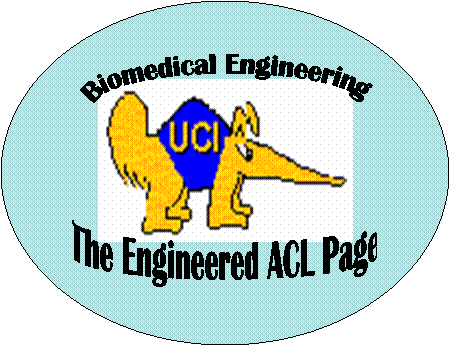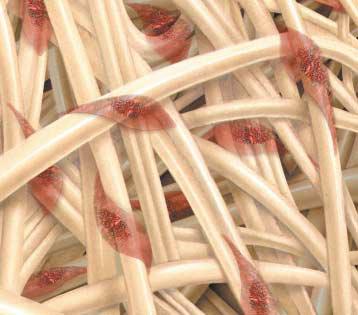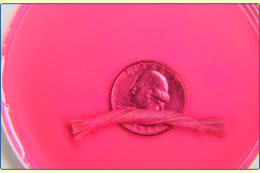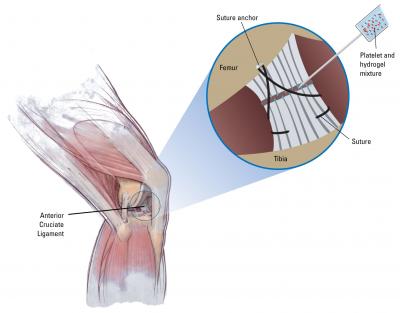
Current Tissue Engineering Strategies
Website made by Shia-Yen Teh ( 2006)
The ACL tear is a common injury in many types of sports, and it poses a significant clinical problem. 85% of the force translated to the tibia is provided by the ACL, thus damage to this ligament will have considerable effects on the motions a person will be able to generate. Together, the anterior cruciate and medial collateral ligament account for 90% of all ligament injuries in sports, with female athletes sustaining an ACL tear two to eight times more likely than males. Nearly 200,000 ACL surgeries were done last year in the U.S., costing a total of $3.5 billion, not including $200 million for follow-up physical therapy.
Much advancement in ACL repair has occurred these past 30 years. Postoperatively, patients are able to regain stability in their knee, but many others experience knee pain, weakness, and loss of motion. In addition, the current reconstruction procedure requires autografts from healthy parts of the body, thus weakening the knee in other areas and increasing the knee’s susceptibility to more injury. Other issues with the autograft method are the risk of harvest site infection and nerve injury. For more traumatic injuries, such as those that occur in automobile accidents, often times there are few undamaged tissue left to graft. Allografts from cadavers have been considered but there are issues with disease transmision, bacterial infection, and immunological responses due to the foreign graft.
(tissue engineered ACL composed of adult stem cells seeded on a silk protein matrix, Tissue Regeneration Inc)Due to the shortage of acceptable graft tissue, much research has been put into developing suitable alternative ligament materials. Tissue engineering has emerged as an approach to resolve this issue. Tissue engineering is defined as a method of applying biological and engineering principles for the repair and regeneration of tissues. Many researchers are developing methods to use this technology to engineer a nmber of different tissues, such as skin, nerve, bone, and blood vessels.
Platelet and collagen hydrogel mixture injected in the torn ACl to promote repair, developed by Dr M. Murray. (Illustration courtesy of Patrick Bibbons)Various methods have been developed to create novel materials in vitro, in vivo, using synthetic materials, biological materials, or a combination of both. These scaffolds should require no additional surgical procedures, should minimize further damage to healthy tissue, have little risk for infection or rejection, should be simple to implant, be biocompatible, promote host tissue growth, and should have sufficient strength to stabilize the knee. For the most part, synthetic materials have failed to serve as a suitable ACL replacement, thus most tissue engineering techniques have focused on a biosynthetic or purely biological material. To learn more about either of these materials, click on the following links.


